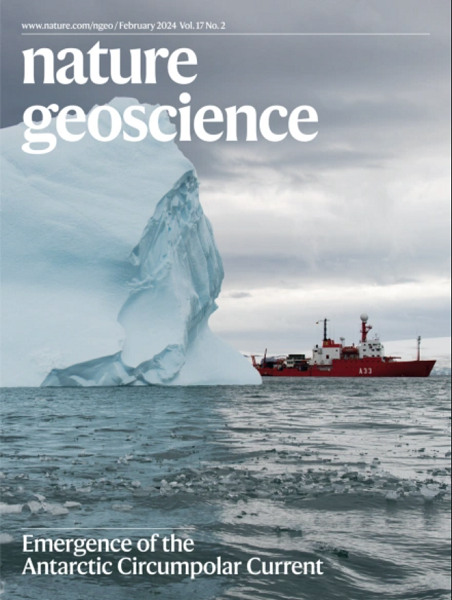气候变化的直接和滞后影响加剧了 2022 年欧洲干旱
IF 15.7
1区 地球科学
Q1 GEOSCIENCES, MULTIDISCIPLINARY
引用次数: 0
摘要
2022 年,欧洲遭遇了大范围的夏季干旱,造成了严重的社会经济后果。量化人类引起的气候变化对这一极端事件的影响有助于为未来的干旱做好准备。在这里,通过将观测数据和气候模式输出结果与水文和地表模拟相结合,我们表明中欧和南欧经历了自2002年开始卫星观测以来观测到的最高的总蓄水赤字,这可能是过去60年中最高和最普遍的土壤水分赤字。虽然降水不足是造成土壤水分干旱的主要原因,但人类引起的全球变暖通过增强蒸发造成了超过 30% 的干旱强度及其空间范围。我们发现,14%-41%的气候变化影响是由 2022 年水文年之前发生的气候变暖导致的土壤干燥引起的,这表明考虑滞后的气候变化影响以避免低估相关风险的重要性。人类引起的气候变化对观测到的极低河流排水量也有类似的影响。这些结果突出表明,全球变暖对干旱的影响已经开始,影响范围广且持续时间长,干旱风险可能会随着未来人为因素导致的进一步变暖而升级。本文章由计算机程序翻译,如有差异,请以英文原文为准。


Direct and lagged climate change effects intensified the 2022 European drought
In 2022, Europe faced an extensive summer drought with severe socioeconomic consequences. Quantifying the influence of human-induced climate change on such an extreme event can help prepare for future droughts. Here, by combining observations and climate model outputs with hydrological and land-surface simulations, we show that Central and Southern Europe experienced the highest observed total water storage deficit since satellite observations began in 2002, probably representing the highest and most widespread soil moisture deficit in the past six decades. While precipitation deficits primarily drove the soil moisture drought, human-induced global warming contributed to over 30% of the drought intensity and its spatial extent via enhanced evaporation. We identify that 14–41% of the climate change contribution was mediated by the warming-driven drying of the soil that occurred before the hydrological year of 2022, indicating the importance of considering lagged climate change effects to avoid underestimating associated risks. Human-induced climate change had qualitatively similar effects on the extremely low observed river discharges. These results highlight that global warming effects on droughts are already underway, widespread and long lasting, and that drought risk may escalate with further human-induced warming in the future. An attribution analysis using observations, hydrological models and climate models suggests that both direct and lagged effects of climate warming contributed to Europe experiencing the highest observed water storage deficit in the satellite era during the widespread drought of 2022.
求助全文
通过发布文献求助,成功后即可免费获取论文全文。
去求助
来源期刊

Nature Geoscience
地学-地球科学综合
CiteScore
26.70
自引率
1.60%
发文量
187
审稿时长
3.3 months
期刊介绍:
Nature Geoscience is a monthly interdisciplinary journal that gathers top-tier research spanning Earth Sciences and related fields.
The journal covers all geoscience disciplines, including fieldwork, modeling, and theoretical studies.
Topics include atmospheric science, biogeochemistry, climate science, geobiology, geochemistry, geoinformatics, remote sensing, geology, geomagnetism, paleomagnetism, geomorphology, geophysics, glaciology, hydrology, limnology, mineralogy, oceanography, paleontology, paleoclimatology, paleoceanography, petrology, planetary science, seismology, space physics, tectonics, and volcanology.
Nature Geoscience upholds its commitment to publishing significant, high-quality Earth Sciences research through fair, rapid, and rigorous peer review, overseen by a team of full-time professional editors.
 求助内容:
求助内容: 应助结果提醒方式:
应助结果提醒方式:


